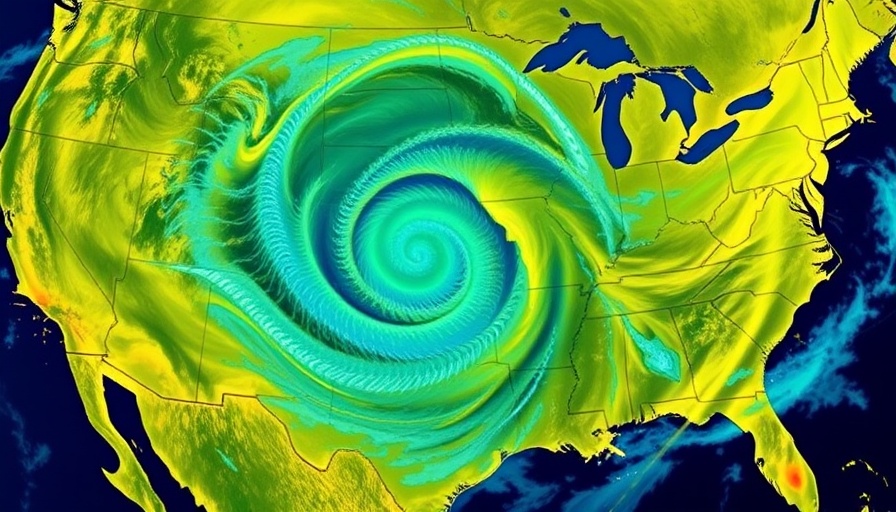
Severe Weather Pattern Shifts: A Central Florida Dilemma
The weather in Central Florida has been anything but predictable over the recent months. Following a tumultuous March filled with strong thunderstorms and destructive tornadoes, April saw a drastic change as the conditions dried out. This shift has left many areas grappling with increasing risks of brush fires due to the drought that followed. However, good news is on the horizon as forecasters point towards potential rainfall increases this May, relieving drought-stricken landscapes.
Understanding the Current System: What’s Brewing?
The onset of a new storm system is set to reinvigorate Central Florida’s weather dynamics, challenging the dominance of the dry ridging that has characterized the latter half of April. Satellite imagery indicates the descent of a trough and cold front which are crucial in generating thunderstorms and rainfall. As this system moves through, it has already proven capable of producing powerful storms, including confirmed tornado activity in areas beyond Central Florida.
Expected Impacts: What to Brace For
Residents in Marion, Sumter, and Lake counties, as well as coastal regions from Flagler to Brevard, should remain vigilant for the potential of fast, rogue spinups—a lingering effect as the sea breeze gets revitalized. While widespread severe storms or a high incidence of tornadoes are not anticipated locally, isolated strong storms cannot be ruled out. Sunday is marked as a weather alert day, signaling the potential for damaging storms to sweep through Central and Eastern Florida.
The Evolving Landscape of Severe Weather
Historically, Central Florida has faced a unique set of challenges with its severe weather patterns. The region is known for its rapid shifts between high humidity and severe thunderstorms, further complicating local weather forecasting. The unpredictability of weather exacerbates concerns for those unprepared for sudden changes—hence why understanding these patterns is crucial for residents.
Community Preparedness: How to Stay Safe
As thunderstorms loom, community preparedness cannot be overstated. It is essential for residents to stay updated with the latest forecasts through reliable local news channels and weather apps. Preparing emergency kits containing essentials like food, water, and basic medical supplies is a prudent step towards ensuring safety when severe weather strikes.
Actionable Insights for Residents
Central Floridians should take proactive measures as the storm system approaches. Keeping a battery-operated weather radio on hand can provide real-time alerts. Additionally, understanding the differences between severe weather alerts—such as watches versus warnings—can aid in informed decision-making during crises. Families should create a safety plan that includes designated meeting points and emergency contact numbers to streamline communication if an unexpected storm strikes.
Future Trends and Forecasting Technologies
The advancement of weather forecasting technologies means better monitoring and prediction of severe weather systems. Tools like Doppler radar have become increasingly sophisticated, allowing meteorologists to track storms with greater accuracy than ever before—providing warnings that can save lives. Continuous developments in climate modeling also promise to improve our understanding of future weather patterns and how they may evolve in the face of climate change.
Conclusion: Be Prepared and Stay Informed
In conclusion, as Central Florida braces for the return of severe thunderstorms, it is imperative for residents to stay informed and prepared. The unpredictability of weather patterns necessitates a proactive approach to safety and awareness. By being equipped with the right information and tools, communities can navigate through the uncertainties posed by severe weather.
 Add Row
Add Row  Add
Add 




Write A Comment